|
Chatsworth Mill
Ruth Andrews |
|
Keith and I photographed this old corn mill on the
Chatsworth Estate in Derbyshire on a day in January
when the surrounding hills were covered in snow.
Also known as Edensor Mill or Paine’s Mill, it was
built in about 1761-2. It replaced an older mill
nearer to Chatsworth House, and was designed by
James Paine who created a number of other features
in the park including two bridges and the
spectacular curved weir for the mill. It was
designed as an eye-catcher within the park and still
serves that function. It was nearly destroyed in
1962 when a beech tree was blown down in the great
storm The Duchess of Devonshire prevented it from
being dismantled and had it made safe as a ruin. |
|
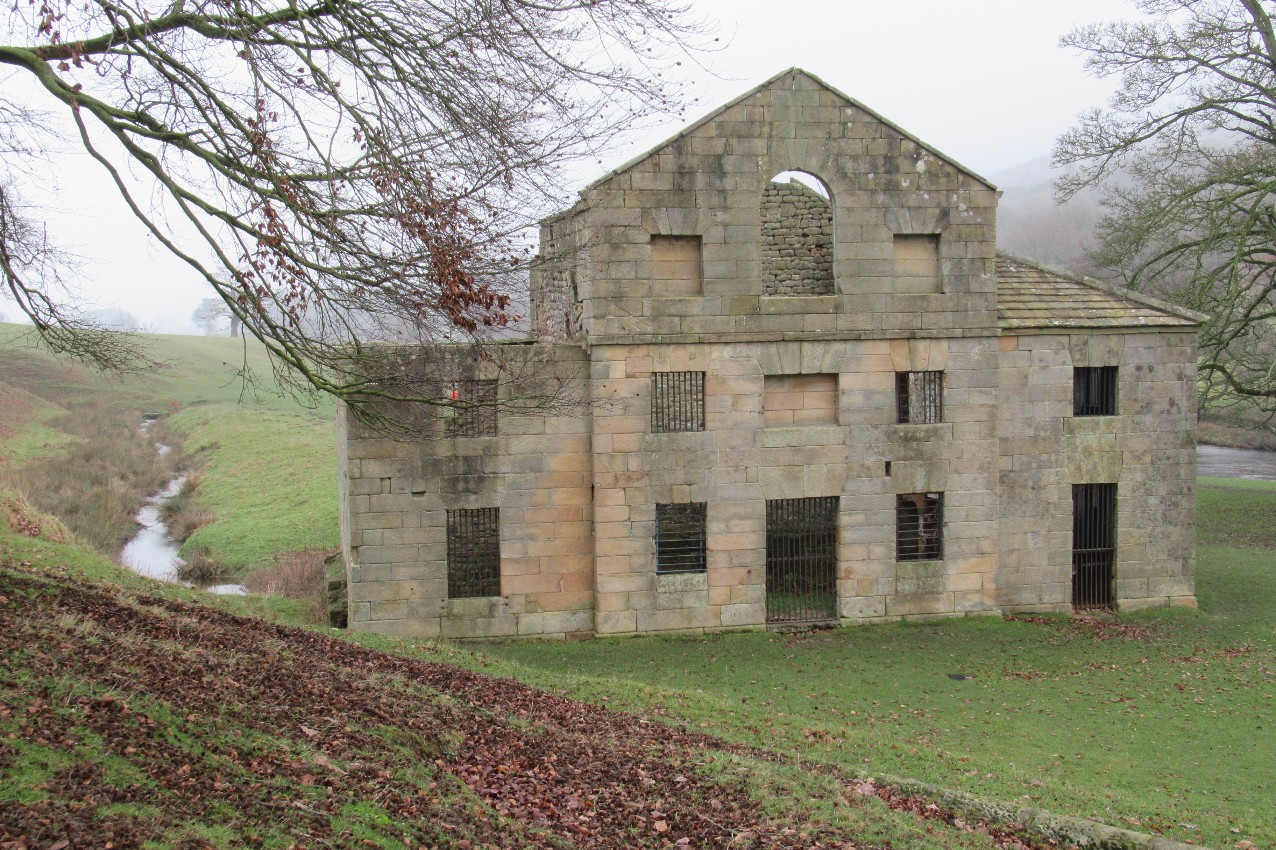
|
|
The mill took several years to complete as the weir
and leats had to be constructed. The weir across
the river Derwent is perhaps unnecessarily grand,
but it provides a distinctive feature in the
landscape in its own right.
The underground head race is still easy to trace
from a hatch above the weir (which appears to be
blocked) to an open section of leat leading to the
mill, which can be seen in the picture below right.
The leat may be blocked but a fair bit of water
still gets through. The tail race is invisible but
discharges back into the Derwent via an arched stone
culvert.
|
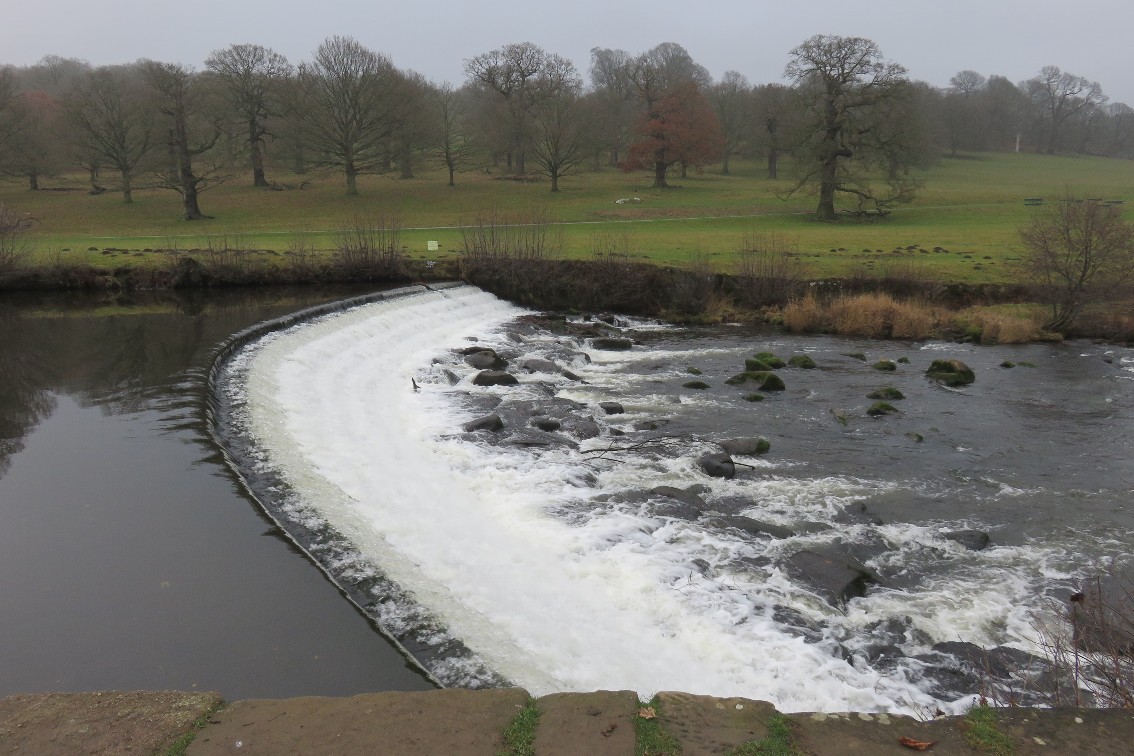 |
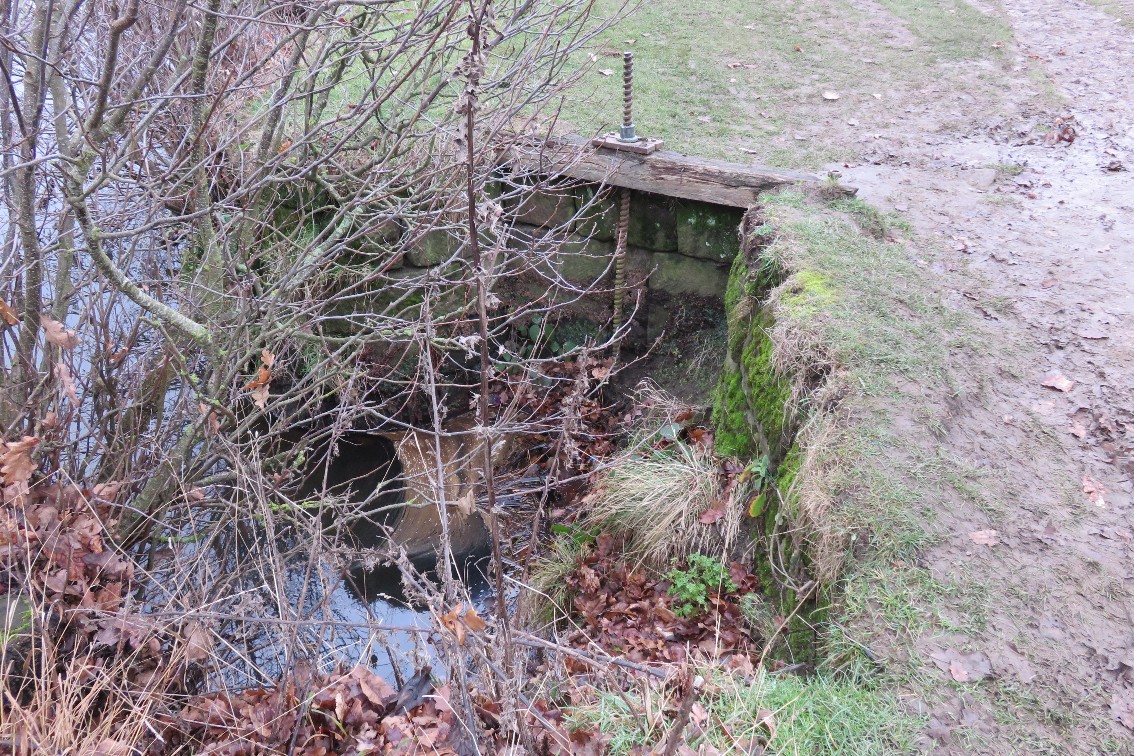
The mill is believed to have fallen out of use in
1950 when the corn miller was Wilfrid Johnson. |
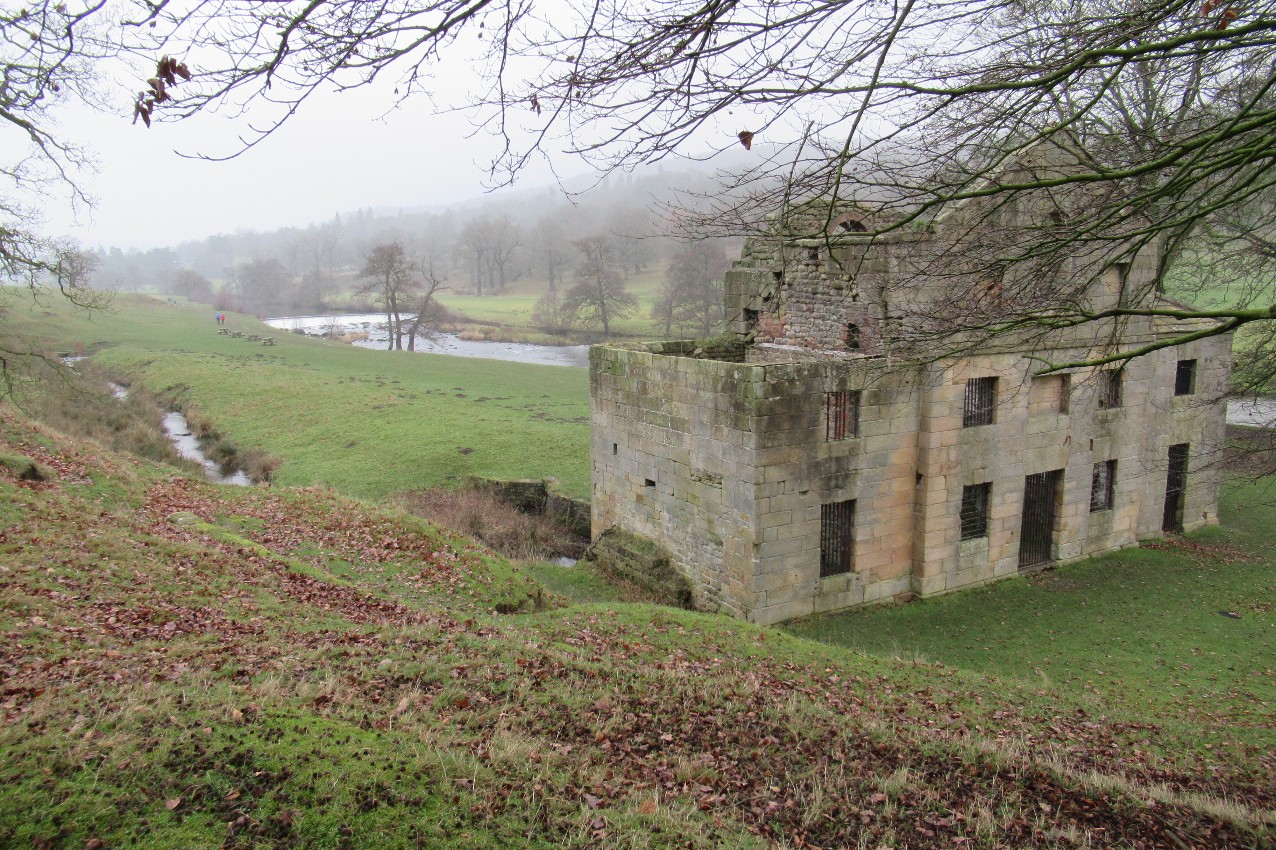 |
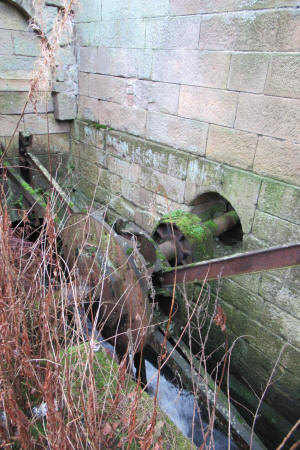 |
Internally there are several remains of machinery,
which again look comparatively modern. I can’t find
any information about what they might be, although
several belt pulleys are visible, and what I assume
is the pit wheel.
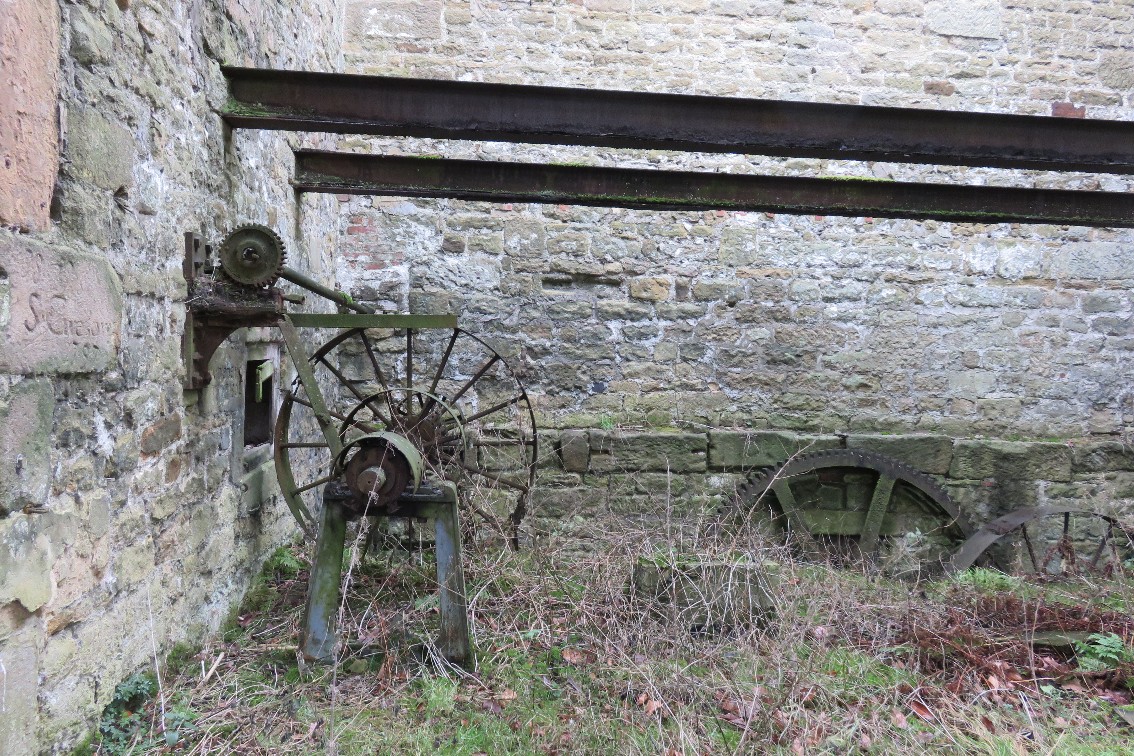
|
 |
‘S Gregory’ must have left his mark on this archway
inside the mill within 40 years of it being built
There are several more graffiti dated 1808: one is
just visible on the left.
It is not possible to get inside the building, and
there are no meaningful remains of the upper floors,
so no way of knowing where the stones were situated,
although there is the obligatory mill stone leaning
on the wall outside. It is made of millstone grit
like the rest of the building, which is not
surprising as there are several gritstone edges
nearby– like this one in the snow.
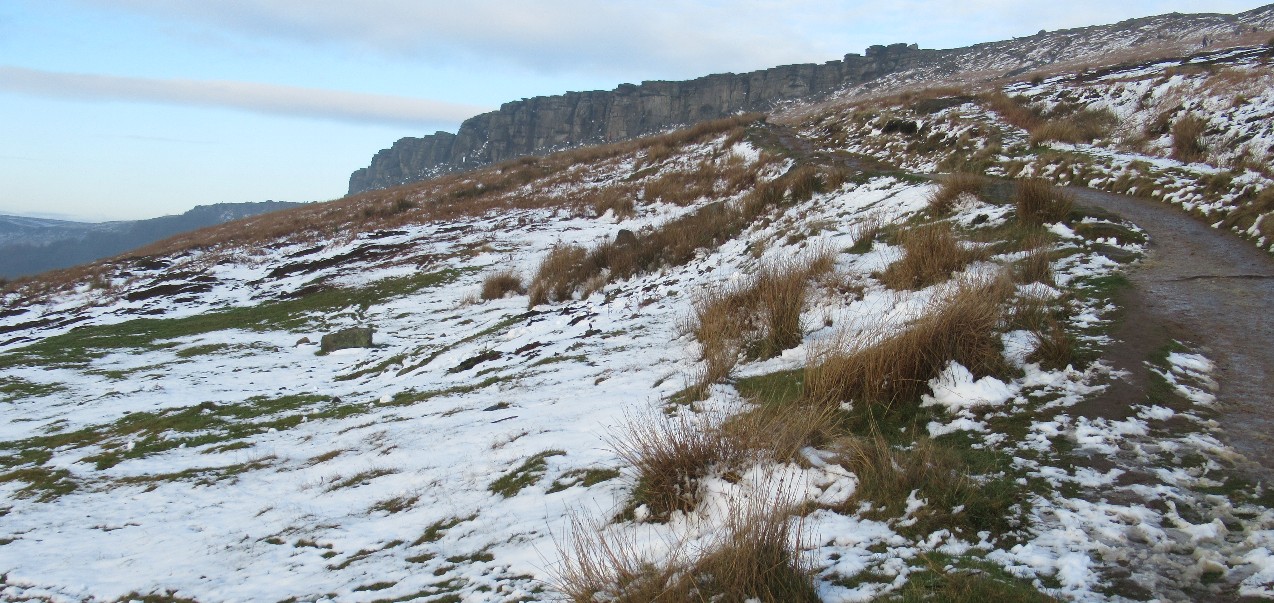 |
